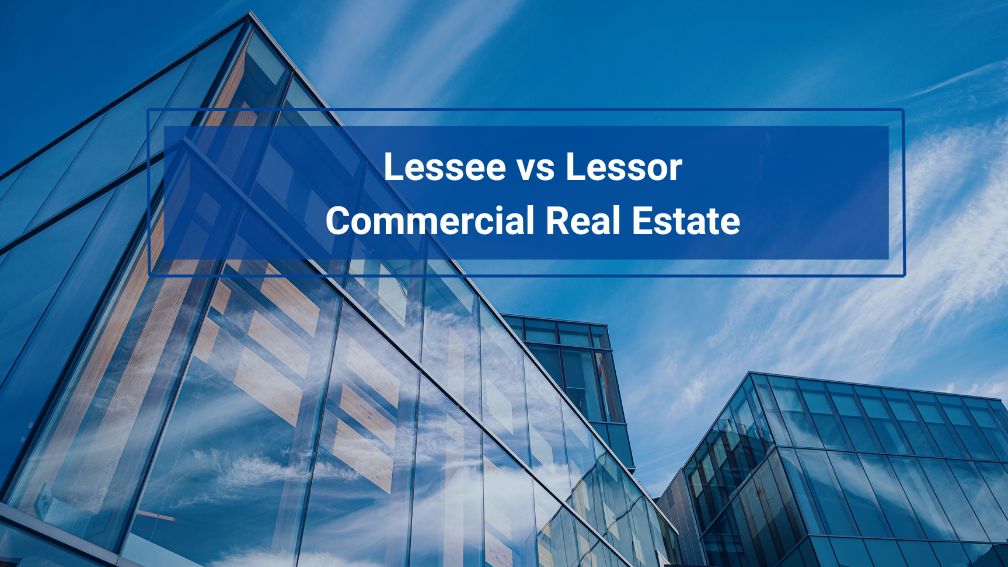Lessee vs Lessor: Key Differences
Last Updated on October 25, 2024 by Morgan Beard
In commercial real estate, understanding the roles of a lessee and a lessor is essential. With numerous stakeholders involved—from brokers and lawyers to real estate teams, accountants, and property managers—having a clear grasp of the lessee-lessor is critical for smooth lease management and portfolio
Is a Lessee a Tenant or Landlord?
In commercial real estate terminology, a lessee is equivalent to a tenant, while a lessor functions as the landlord. However, the terms “lessee” and “lessor” often appear in formal legal documents and financial statements, carrying specific implications for accounting and legal purposes.
What’s the Difference Between a Lessee vs. Lessor?
At its core, the lessee-lessor relationship defines the two primary parties in any lease agreement. A lessor, also known as the Landlord, holds ownership rights and grants property use to others, while a lessee, also known as the Tenant, gains temporary usage rights in exchange for regular payments. This fundamental relationship drives every aspect of commercial real estate transactions.
What Is an Example of a Lessee vs. Lessor?
Consider a major retail chain looking to expand into a prime shopping district. The property owner (lessor) maintains ownership while granting the retail chain (lessee) the right to operate their business in the space. The retailer pays monthly rent and follows agreed-upon terms regarding property usage and modifications.
Key Rights and Responsibilities
- Lessor Rights:
- Property ownership retention
- Collection of lease payments
- Property maintenance oversight
- Setting lease terms and conditions
- Lessee Rights:
- Property usage within agreed terms
- Quiet enjoyment of the premises
- Facility modifications (as permitted)
- Option to renew (if specified)
Understanding the Lessee and Lessor Relationship
The lessee-lessor relationship extends beyond simple payment arrangements. Modern commercial leases often involve complex negotiations around:
- Build-out allowances
- Common area maintenance (CAM) charges
- Operating expense pass-throughs
- Sublease rights
- Extension options
Lessee vs Lessor Accounting
Recent accounting standards have transformed how both parties report lease obligations. Under ASC 842, IFRS 16, and GASB 87, organizations must maintain detailed records of lease commitments and associated assets. Check out our blog for technical insights about lessee vs lessor accounting.
These changes have significantly impacted how both lessees and lessors recognize leases on their balance sheets, requiring greater transparency and accuracy. Lessees are now required to report most leases as liabilities, along with corresponding right-of-use assets, while lessors must classify leases to reflect ownership and revenue generation more accurately. For organizations with extensive lease portfolios, navigating these accounting standards can be complex, but it’s crucial for compliance and financial reporting.
Key Differences Between Lessees and Lessors:
- Financial Obligations
- Lessees: Regular payment obligations, maintenance costs
- Lessors: Property investment, major repairs, property taxes
- Risk Profile
- Lessees: Operational flexibility, lower capital requirements
- Lessors: Market value fluctuation, vacancy risk
- Strategic Considerations
- Lessees: Location flexibility, capital preservation
- Lessors: Long-term asset appreciation, steady income streams
Whether you’re negotiating a new lease or managing an existing portfolio, the relationship between lessee and lessor defines the structure, rights, and responsibilities of all parties involved. In this guide, we’ll break down the core differences between a lessee and a lessor, explore their unique responsibilities, and offer insights to help Heads of Real Estate make informed leasing decisions that benefit both sides.
